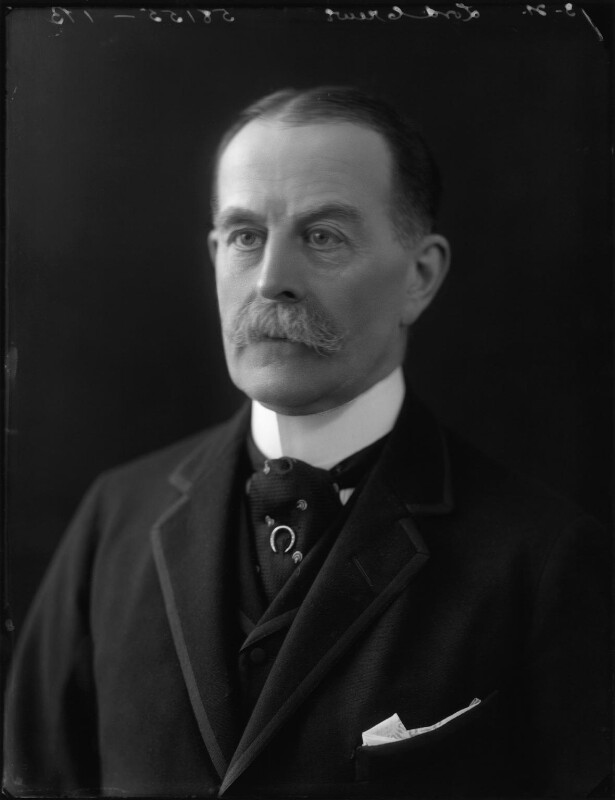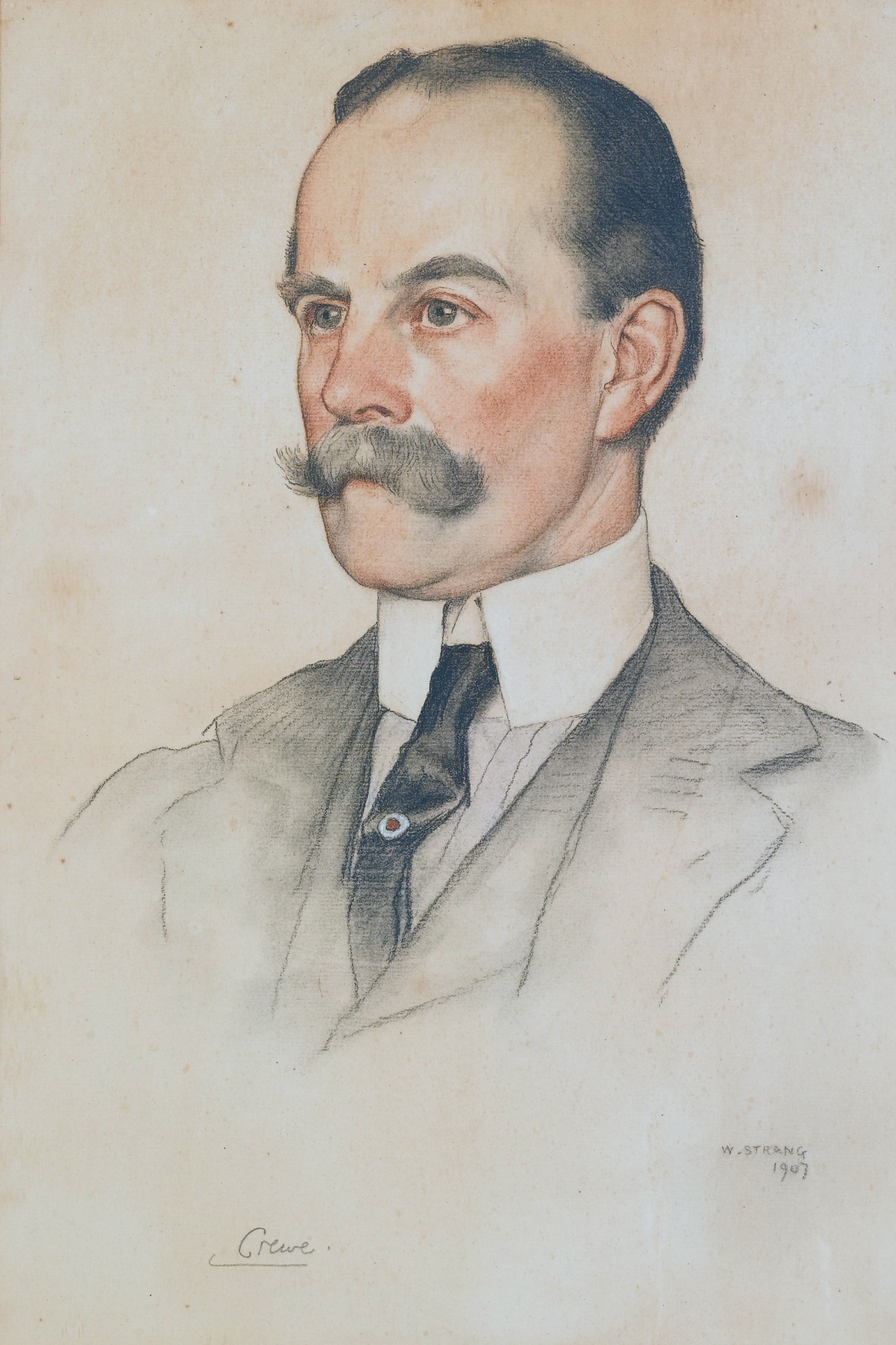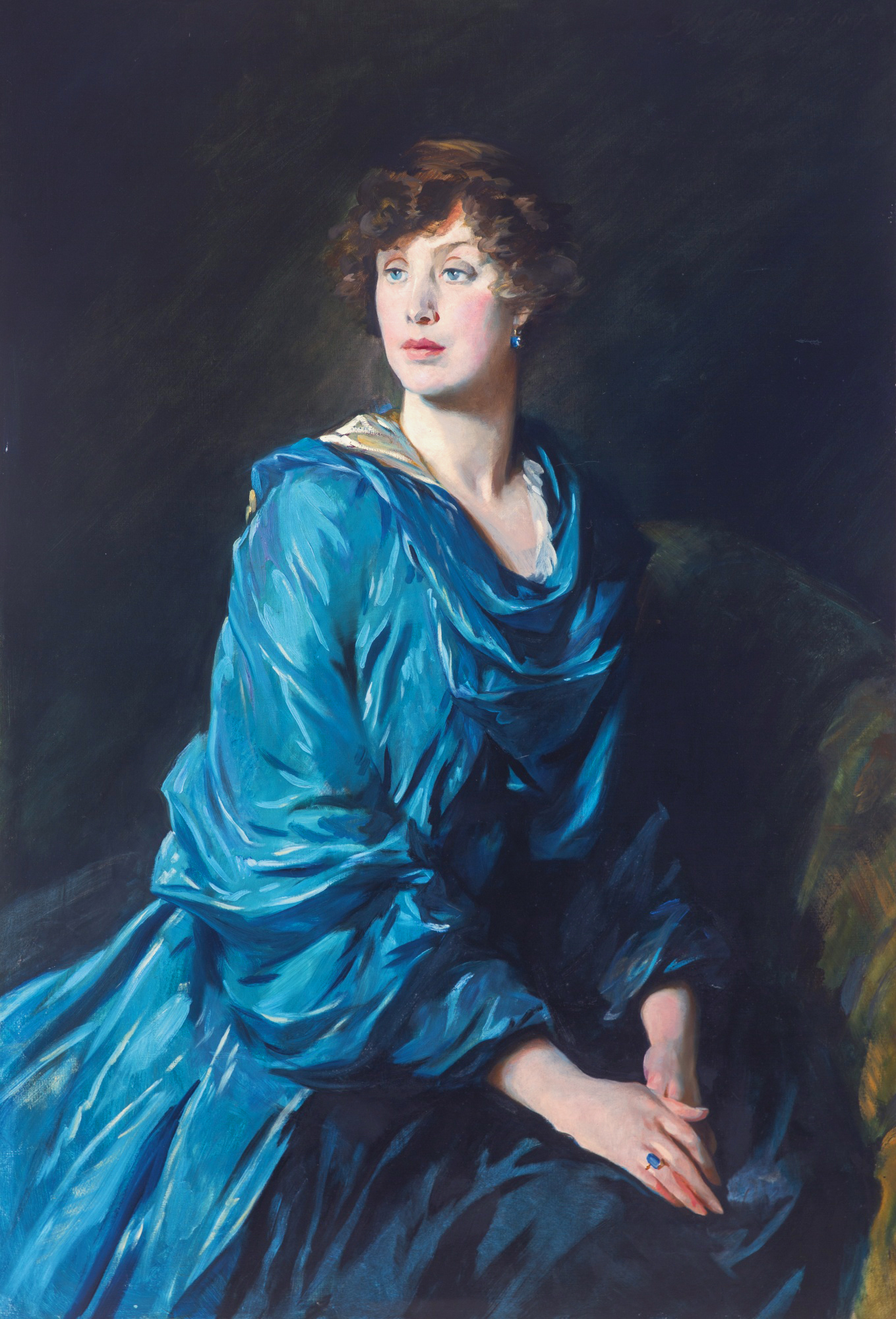1. Early Life and Education
Robert Offley Ashburton Milnes was born on January 12, 1858, at 16 Upper Brook Street, Mayfair, London. He was the only son of Richard Monckton Milnes, 1st Baron Houghton, and the Honourable Annabella Crewe, who was the daughter of John Crewe, 2nd Baron Crewe. His early education took place at Winton House, near Winchester, followed by Harrow School. He then proceeded to Trinity College, Cambridge, where he matriculated on October 16, 1875, and earned his Bachelor of Arts (B.A.) degree in 1880, followed by a Master of Arts (M.A.) degree in 1885. Upon his father's death on August 10, 1885, he inherited the title of Baron Houghton.
2. Honours and Distinctions
Throughout his distinguished career, Robert Crewe-Milnes received numerous honours and academic distinctions. On January 21, 1886, he was elected a Fellow of the Society of Antiquaries of London. He was appointed a Privy Counsellor on August 18, 1892. In recognition of his contributions to public life and education, he received several honorary doctorates: an LL.D. from Liverpool University in 1909, an LL.D. from Leeds University in 1910, and an LL.D. from Cambridge University in 1911. He was also awarded a D.C.L. from Oxford University in 1912 and a D.C.L. from Durham University in 1919. In 1911, he was made a Knight of the Order of the Garter, one of the most prestigious orders of chivalry in the United Kingdom.
3. Political Career
Robert Crewe-Milnes had an extensive and impactful career as a Liberal politician, serving in various governmental and party leadership roles. His dedication to public service and his moderate liberal principles defined his contributions to British politics.

3.1. Entry into Public Service and Early Roles
Crewe-Milnes began his political journey in April 1883 as Assistant Private Secretary to Lord Granville, who was then the Foreign Secretary. In 1884, he unsuccessfully contested the Barnsley by-election as the Liberal candidate. After inheriting the Barony of Houghton in 1885, he was appointed a Liberal whip. In January 1886, during the Third Gladstone ministry, he became a Lord-in-waiting to Queen Victoria and remained a supporter of the Irish Home Rule movement.
From 1892 to 1895, he served as Lord Lieutenant of Ireland in the Liberal government, during which his friend Lord Rosebery eventually became Prime Minister. In 1893, he inherited substantial estates, totaling nearly 50 K acre (50.00 K acre) across four counties, from his maternal uncle, Hungerford Crewe, 3rd Baron Crewe. Following this inheritance, he assumed the additional surname of Crewe by royal license on June 8, 1894. On July 17, 1895, he was created Earl of Crewe in the County palatine of Chester.
3.2. Major Ministerial Appointments
Crewe-Milnes held several significant cabinet positions within Liberal governments. He served as Lord President of the Council from December 1905 to April 1908, and again from May 1915 to December 1916. From April 1908 to November 1910, he was Secretary of State for the Colonies. He held the office of Lord Privy Seal from October 1908 to October 1911 and again from February 1912 to May 1915. He was appointed Secretary of State for India from November 1910 to March 1911, and then reappointed from May 1911 until May 1915. In August 1916, he briefly served as President of the Board of Education until December of that year.
3.3. Leadership in the House of Lords
As Leader of the House of Lords from 1908 to 1916, Crewe-Milnes played a crucial role in navigating constitutional crises and managing key legislation. He was instrumental in steering the Parliament Act 1911, which significantly curtailed the House of Lords' veto power, through the upper chamber. His common sense and sound judgment were highly valued by Prime Minister H. H. Asquith. Despite Winston Churchill's proposal to abolish the Lords in 1910, Crewe-Milnes, with his cautious and "whiggish" temperament, resisted attempts to fundamentally alter the bicameral relationship, focusing instead on reforms to the membership of the House. He participated in the Constitutional Conference Commission established in June 1910 following Edward VII's death, which addressed the implications of the Lords' powers after the inconclusive January 1910 general election. He was also part of the "Inner Sanctum" in the cabinet discussions that led to George V's agreement to create 500 new peers if the Liberals won the December 1910 election, a measure intended to break the parliamentary stalemate. He was selected to negotiate the provisions of the Veto Bill with leading Tories like Lord Cromer and the Archbishop of Canterbury, Randall Davidson.
He also served as Leader of the Liberal Party in the House of Lords from 1908 to 1923, and again from 1936 to 1944, leading the independent Liberal opposition during the Second World War.

3.4. Diplomatic and Later Career
After the Asquith coalition split in December 1916, Crewe-Milnes remained loyal to Asquith, declining office under David Lloyd George. He took on the largely honorific title of Chairman of the London County Council from 1917 to 1918. He maintained a leading role in the education sector, serving as Chairman of the Governing Body of Imperial College London from 1907 to 1922, and as Chancellor of Sheffield University from 1917 to 1944.
From 1922 to 1928, he served as British Ambassador to France, appointed by Bonar Law. During his tenure, he initiated a fund for the establishment of a British Institute in Paris, which later evolved into the University of London Institute in Paris (ULIP). He had a very brief ten-week stint as Secretary of State for War in Ramsay MacDonald's National Coalition from August to November 1931, but did not hold office after the 1931 general election. He also served as Lord Lieutenant of the County of London from 1912 to 1944 and was the Senior Privy Counsellor from 1943 to 1945. For the coronation of King George VI and Queen Elizabeth, he served as Lord High Constable of England.
3.5. Major Government Initiatives
As Secretary of State for India, Crewe-Milnes was responsible for several significant initiatives. He masterminded the organization of the Delhi Durbar in 1911, a grand ceremony designed for the first British monarch to visit India. He also oversaw the momentous decision to relocate the capital of India from Calcutta to Delhi, and the reunification of the two Bengals under a Governor-in-Council. Furthermore, he commissioned the architect Sir Edwin Lutyens for his visionary grand design of New Delhi. In recognition of these achievements and his broader contributions, he was further honored in 1911 when he was created Earl of Madeley and Marquess of Crewe.
3.6. Impact of Personal Tragedies
Crewe-Milnes's burgeoning political career was significantly impacted by personal tragedies. His first wife, Sybil Marcia Graham, whom he had married on June 3, 1880, died suddenly in September 1887 at the age of 30. Determined to cope with this loss, he intended to study agriculture at the Royal Agricultural College, but illness prevented him. He left England and traveled to Egypt, where he wrote his collection of poetry, Stray Verses, which reflected his mournful lament. Further melancholy struck when his eight-year-old son and heir, Richard, died in 1890. These losses deeply affected his personal outlook and career trajectory.
3.7. Political Relationships and Alliances
Crewe-Milnes maintained key political associations and collaborations throughout his career. He formed a close personal friendship with H. H. Asquith, who became his political mainstay, especially during the intrigues leading up to the First World War. He was a trusted confidant and was appointed as an aide on almost every committee. While he initially had an angry exchange of letters with Winston Churchill in May 1908 over colonial debates, he was widely respected for his administrative competence, efficiency, and intelligence. He became increasingly influential with Henry Campbell-Bannerman and the Radicals. Although he deplored David Lloyd George's populist Limehouse Speech in support of the People's Budget, he worked closely with Lloyd George on currency and exchange rate stabilization during the war. His home at Crewe House, Curzon Street in Mayfair, became a center for war propaganda. He remained loyal to the Liberal Party during its crises in 1886, 1909-11, and 1916.
4. Public Speaking and Political Style
Crewe-Milnes was not particularly fond of public speaking, and his oratorical style contrasted sharply with more charismatic speakers like David Lloyd George. His delivery was often described as hesitant and stilted, characterized by "pregnant pauses." Edwin Montagu sardonically claimed that one of his female constituents died of boredom listening to the Marquess. His father-in-law, Lord Rosebery, who had been Liberal Leader before him, considered Crewe-Milnes a reliable politician but a poor speaker, famously quipping when his daughter was in labor, "I hope that her delivery is not as slow as Crewe's."
Despite his reserved public speaking style, Crewe-Milnes was known for his fastidiousness, moderation, and preference for compromise and mediation. He sought to negotiate a middle way in political disputes. His meetings were often spontaneous and informal, though frequently dominated by an aristocratic circle. For instance, Lloyd George recalled how in 1912, Crewe-Milnes attempted to resolve Ulster's long-standing problems with Andrew Bonar Law over a round of golf at Deeside.
5. Political Positions and Ideology
Crewe-Milnes was a committed, albeit moderate, progressive. During his time in Parliament, he consistently voiced support for various social reforms. These included the introduction of old-age pensions, the implementation of an eight-hour workday for miners, and provisions for school meals for schoolchildren. In November 1905, he wrote to the then-Party leader, Henry Campbell-Bannerman, emphasizing the Liberal Party's crucial role in securing social reforms related to taxation, land, and housing, and the need to counter the I.L.P.'s claim as the sole advocate for workers.
His political temperament was often described as "whiggish," characterized by a cautious approach to change and a preference for established order while still advocating for gradual progress. He remained steadfastly loyal to the Liberal Party during significant internal crises in 1886, 1909-11, and 1916. He also acknowledged the damage that the First World War inflicted upon liberalism. Upon his death, Lord Salisbury described him as "the best of the whig statesmen."
6. Literary Activities
Inheriting his father's literary tastes, Robert Crewe-Milnes made notable contributions to literature. He published his collection of poetry, Stray Verses, in 1890. Additionally, he produced other miscellaneous literary works, including Gleanings from Béranger, which was privately printed in 1889 and contained many of his own translations. His war poem, "A Harrow Grave in Flanders," which explores themes of "what might have been," was featured in several anthologies during and after World War I. His writing style was often described as austere and reverential, reflecting his Victorian character and his cautious approach to material.
Soon after the death of his father-in-law, the 5th Earl of Rosebery, in 1929, Crewe-Milnes was asked by the family to write his biography. The resulting two-volume work, Lord Rosebery, was published by John Murray in 1931. The dedication in the book reads: "To my wife - this attempt to tell the story of one we both loved."
7. Private Life and Family
Robert Crewe-Milnes married twice and experienced profound personal losses throughout his life.
His first marriage was in 1880 to Sybil Marcia Graham (1857-1887), daughter of Sir Frederick Graham, 3rd Baronet, of Netherby. They had three daughters and one son, who tragically died in childhood:
- Lady Annabel Crewe-Milnes (1881-1948), who married Arthur O'Neill (1876-1914), an Ulster Unionist Member of Parliament for Mid Antrim. Their third son, Terence O'Neill, later became Prime Minister of Northern Ireland. Lady Annabel's second marriage was to Hugh Dodds, with whom she had two sons, the writer Quentin Crewe and Colin Crewe.
- Hon. Richard Charles Rodes Milnes (1882-1890), who died in childhood.
- Lady Celia Hermione Crewe-Milnes (1884-1985), twin sister to Cynthia. She married Sir Edward Clive Milnes-Coates, 2nd Baronet.
- Lady Helen Cynthia Crewe-Milnes, Mrs Colville, DBE (1884-1968), twin sister to Celia. She married the Honourable George Charles Colville (1867-1943) and was the mother of Sir John Colville, who served as Private Secretary to Neville Chamberlain, Winston Churchill, and Clement Attlee.

More than a decade after his first wife's death, the 41-year-old Crewe-Milnes married again on April 20, 1899. His second wife was the eighteen-year-old society beauty, Lady Margaret Etrenne Hannah Primrose (born January 1, 1881), daughter of the former Prime Minister 5th Earl of Rosebery. As Lady Crewe, she became one of the first seven women appointed as magistrates in 1919, following the passage of the Sex Disqualification (Removal) Act 1919. They had two children, a son and a daughter, but their son also died in childhood:
- Richard George Archibald John Lucian Hungerford Crewe-Milnes, Earl of Madeley (1911-1922), who died in childhood.
- Lady Mary Evelyn Hungerford Crewe-Milnes (1915-2014), who became the first wife of the 9th Duke of Roxburghe.
8. Death and Titles
Robert Crewe-Milnes died on June 20, 1945, at the age of 87. His body was laid to rest in the graveyard of Saint Bertoline's Church in the Cheshire village of Barthomley. As he had no surviving male heir-both of his sons, one from each marriage, having died in childhood-his marquessate, earldom, and barony titles became extinct upon his death.